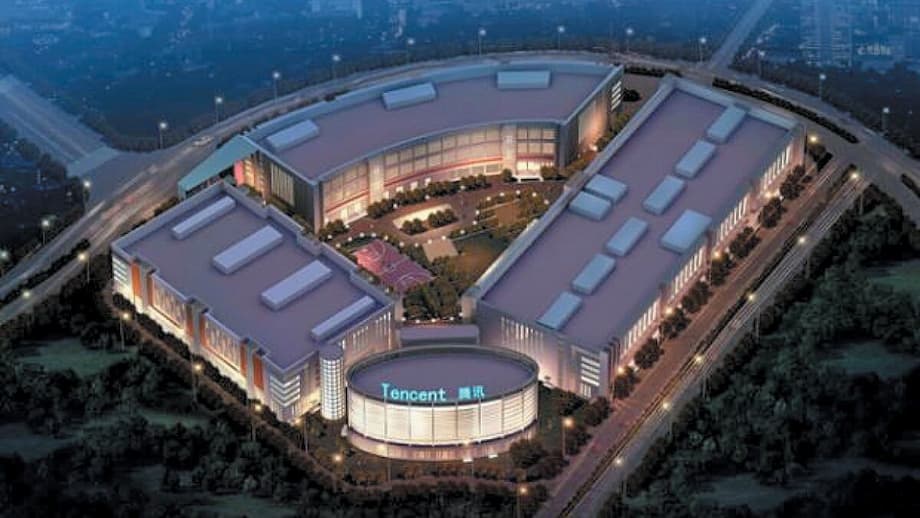A central hub on the Yangtze
China is turning a 760 acre island in the city of Wuhu into a vast cluster of data centers, the core of a nationwide plan to centralize artificial intelligence compute. The project, widely referred to as the Stargate of China, ties together servers from Huawei, China Mobile, China Telecom, and China Unicom. It aims to consolidate scattered facilities into a unified network that can be scheduled and shared at scale, a response to soaring demand for AI and limited access to the most advanced processors. Local authorities say investment tied to the effort has reached 270 billion yuan, about 37 billion dollars.
The Wuhu site, known locally as Data Island, sits within reach of Shanghai, Hangzhou, and Nanjing. Proximity to those dense urban markets matters for AI inference, the stage where trained models answer queries or generate content for users. Shorter distances reduce latency, so voice assistants, search, financial risk checks, retail recommendations, and city services feel more responsive. China is also expanding or repurposing facilities in Ulanqab, Guizhou, and Qingyang to serve other regions. Those remote centers, many located in areas with cheaper land and abundant power, are being directed to focus on model training, the most compute hungry stage of AI development.
What the 760 acre data island will house
Operators are building large halls filled with accelerators, CPUs, memory, storage, and high speed switching gear. Telecom carriers already lay and manage fiber routes across the region, so the site can connect at high capacity to nearby cities and to other inland clusters. The vision is that workloads can move across the network depending on urgency, cost, and availability, with idle resources in one location assigned to help tasks in another. Huawei is promoting UB Mesh, a technology it says can link processors across many halls or even cities, with software that treats them like one pool for training and inference.
Why centralize AI compute now
Beijing wants to raise the return on every chip inside the country. In recent years, many accelerators in remote provinces sat underused because local demand was thin, while coastal companies that needed compute could not tap that capacity easily. A nationwide network promises a fix. By connecting clusters, planners expect better redundancy during outages, higher utilization across the fleet, and a market where surplus compute in one area can be sold to buyers in another.
The push is also shaped by geopolitics. Analysts estimate that US labs control about three quarters of global AI computing capacity, while China holds around 15 percent. US export controls limit Chinese access to the most advanced Nvidia GPUs and prevent leading contract chipmakers from fabricating those chips for Chinese clients. That makes better orchestration of domestic hardware a priority. Centralization is the policy lever on hand, while domestic chip projects try to catch up.
How the network will work
The plan draws a clear line between two kinds of AI work. Training is the heavy lift phase where models learn from data. It favors remote sites that can tap cheaper power and land, and where long running jobs can occupy thousands of accelerators for days or weeks. Inference is the response phase where trained models serve users. It moves closer to end users in major cities, where speed and reliability matter more than the absolute lowest electricity cost.
Training in the west, inference near the coast
Remote regions such as Inner Mongolia and Gansu already host giant server farms that were built for cloud or internet services. Under the new approach, those halls are being repurposed for model training, including large language models (LLMs). They are connected to coastal cities by high capacity fiber, so checkpointed models can be copied quickly to inference clusters near Shanghai, Hangzhou, Guangzhou, and other metros.
Huawei UB Mesh and cluster level scheduling
To make this work, operators need fast interconnects and software that can coordinate thousands of processors. UB Mesh is positioned as a fabric that reduces communication overhead between accelerators across rooms or sites. In practical terms, that means techniques similar to those used in high performance computing, such as remote direct memory access and collective communication libraries that keep many chips in sync while training very large neural networks. On top of the fabric, schedulers can place tasks where power is available, where the right chips sit idle, or where latency to the end customer is lowest.
Subsidies and the chip squeeze
Wuhu is offering subsidies that can cover up to 30 percent of AI chip procurement bills. Local grants like these reduce the upfront cost of filling server racks, speed up deployment, and help operators hit density targets sooner. They also cushion the gap between domestic accelerators and the latest foreign parts that are subject to export controls.
Domestic vendors such as Huawei and Cambricon are working to close that gap with accelerators and compiler software. Operators still face a patchwork of hardware generations that can complicate training runs, especially when models grow to trillions of parameters. This pressure has encouraged a shadow market. Resellers have tried to acquire restricted Nvidia systems and route them into China despite controls. One Wuhu based intermediary has been linked to orders for Blackwell generation servers. Nvidia has rejected the idea that such equipment can be made to work inside China at scale under current rules, arguing that supply chains, licensing, and support requirements make those claims unrealistic.
Who stands to benefit
The near term goal is to give businesses in major cities faster access to AI inference. Banks can run risk checks and fraud detection with lower latency. Retailers can deploy recommendation models that update in near real time. City agencies can use computer vision for traffic control and flood monitoring. Media and design firms can render images and video with fewer delays. Startups can rent compute by the hour instead of buying hardware upfront. By linking inland training centers to coastal inference clusters, the network attempts to serve both experimentation and daily operations.
Telecom carriers also gain a role beyond connectivity. Their data centers become anchor tenants of the AI era, selling compute and storage to cloud customers while providing intercity bandwidth that keeps models synchronized. For local governments, the buildout promises jobs during construction and a base for digital services that anchor new tech businesses in the region.
How it compares to the US Stargate buildout
While China rallies around staged networks that pool many existing halls, the United States is backing a set of very large new campuses under a project called Stargate. Investors and operators plan to spend up to 500 billion dollars across the country. The roadmap calls for nearly 7 gigawatts of data center capacity, on par with the output of about seven large nuclear reactors. One flagship campus in Abilene, Texas is designed to house more than 400,000 GPUs. Project partners say the buildout will create about 25,000 onsite jobs during the construction peak.
OpenAI chief executive Sam Altman framed the stakes in simple terms, highlighting the link between future AI progress and the hardware to support it. Before unveiling new sites with partners, he said the quiet part out loud about the scale that will be required.
“AI can only fulfill its promise if the necessary computing power is built.”
The two strategies are different in posture. The US is betting on very large new campuses that group hundreds of thousands of accelerators behind single walls. China is knitting together many clusters old and new, then using scheduling software and new interconnects to make them behave like a larger whole. The US approach tests the limits of power supply, land, and water in a few places. The Chinese plan spreads risk and cost, while accepting the overhead of running many sites as one system.
Power, cooling, and networks
Modern AI clusters draw vast amounts of power and produce heat that must be removed around the clock. The Wuhu island site will require new substations, transmission lines, and backup capacity to keep critical systems live during outages. Most training halls rely on liquid cooling to remove heat directly from chips and memory, a shift from the air cooling common in older server rooms. Operators will search for nearby water sources or closed loop systems that reduce withdrawals, and they will press vendors for higher efficiency at the rack level.
The network is just as critical. Linking distant training farms to coastal inference clusters demands fiber routes with many terabits of capacity, optical transponders that can push data over hundreds of kilometers, and switches that can handle east west traffic inside the data center without bottlenecks. Carriers with nationwide backbones hold an advantage. They can provision redundant paths and manage traffic engineering so that model updates and checkpoints arrive on time even during maintenance or weather events.
Risks, security, and governance
Centralization improves control and visibility, but it concentrates risk. If too much capacity depends on a few network corridors, outages or cyberattacks could ripple across regions. Planners say redundancy is built in by linking many sites and by designing failover paths. Cybersecurity teams will need to guard model weights, customer data, and the scheduling layer itself, which becomes a prized target once it controls large pools of compute.
There are practical constraints. Using many smaller or older halls can reduce training efficiency compared with a new single campus designed around one generation of hardware. Power contracts and grid stability must keep pace with growth. Land use decisions, including the conversion of farmland, can draw scrutiny if local communities feel displaced or if food production is reduced. Transparency on compensation, environmental impact, and grid planning will shape public acceptance.
What comes next
Work now centers on expanding the first halls in Wuhu, connecting them to inland training farms, and hardening the software that schedules jobs across sites. Local governments are aligning procurement cycles with subsidy windows to encourage early tenants to commit capacity. Telecom operators are lighting new fiber routes and upgrading backbones so model checkpoints can move quickly from training to inference clusters near coastal cities.
Engineers will watch three variables closely. First, whether UB Mesh and similar fabrics deliver the claimed gains when stretched across multiple halls. Second, whether domestic accelerators, compilers, and frameworks can train and serve the latest models with acceptable efficiency. Third, whether power and cooling supply can keep up with rising rack density without causing brownouts or water stress. Progress on those fronts will shape how fast the national network scales and how much it contributes to growth in AI services across the country.
Key Points
- China is building a centralized AI compute network anchored by a 760 acre Data Island in Wuhu with investment around 37 billion dollars.
- The network links facilities in Wuhu to inland clusters in places such as Ulanqab, Guizhou, and Qingyang to split training and inference.
- Huawei, China Mobile, China Telecom, and China Unicom are core operators, with Huawei promoting UB Mesh for cluster to cluster connectivity.
- Wuhu offers subsidies covering up to 30 percent of AI chip purchases to speed deployment despite export controls on advanced foreign GPUs.
- China seeks to raise utilization of existing accelerators and sell surplus compute across regions through a unified scheduling layer.
- Analysts estimate the US holds about 75 percent of global AI compute capacity, while China has around 15 percent.
- The US Stargate program targets nearly 7 gigawatts of capacity and up to 500 billion dollars in spending, including a Texas campus designed for 400,000 GPUs.
- OpenAI chief executive Sam Altman says building enough compute is essential for AI to meet expectations.
- Centralization promises lower latency for users in major coastal cities and redundancy across many linked sites.
- Challenges include power and cooling supply, cybersecurity, hardware diversity across sites, and public scrutiny of land and water use.




